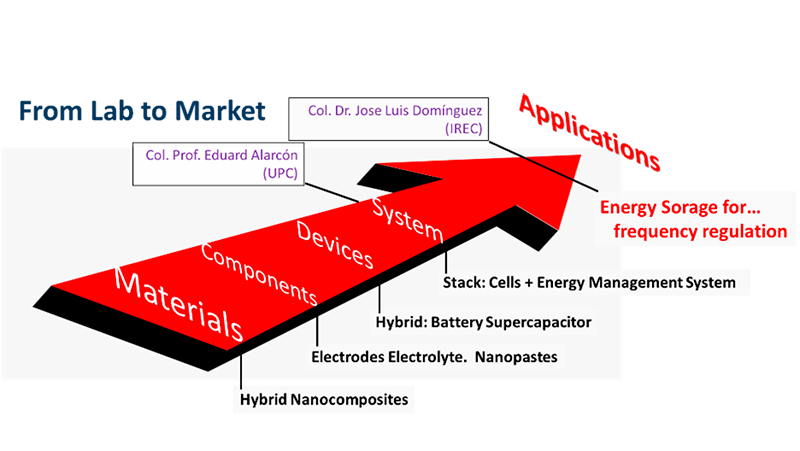New projects & Milestones
2021 was expected to be the year the Covid pandemic was overcome, but it was not. We adapted, though, and kept working in a consolidated new way, using more consistently online tools and alternatives. Presential congresses were reduced to an absolute minimum. Maybe we should keep using these more sustainable alternatives in the future. Shouldn’t we?
And yet, we have been able to carry on with our projects in an impaired but still productive way. Our funding administrations were also heavily affected by the pandemic, which made the acquisition of certain key tools unachievable (specifically, the attritor equipment for graphene manufacturing). Nevertheless, we were able to conclude projects and publish results of research led by us, as well as carried out in collaboration with international colleagues. Our GraphCat projects are the best example in this sense. The collaboration with Eurecat (Claudia Delgado) and IREC (Joan Ramon Morante) was very satisfactory, despite the impossibility to buy the aforementioned equipment.
In 2021 we ended various projects and said goodbye to some members of the team. Dr Raul Benages-Vilau (senior post-doctoral researcher and project manager) and Dr Sara Goberna-Ferrón left our group. It is very hard to keep a steady state in public research labs like ours.
On the other hand, and most remarkably, this year we have resumed and strengthened our technology transfer activities, with the creation of the start-up company Napptilus Battery Labs (NBL) in January and the filing of two new patents on fast-charging energy storage devices, one of which derived from work done in collaboration with our former post-doctoral researcher Dr Deepak Dubal (presently at QUT, Australia).
Besides this enhanced technology transfer efforts, our group has continued working on the fundamentals of our NEO-Energy brand research, namely, hybrid electrode materials for hybrid energy storage, which has allowed us to expand our collaborations and increase our internationalization with groups from Australia, Germany, but also with emerging countries like Malaysia or Brazil. We focused not only on materials, but also on energy storage devices, which we strived to further develop, with emphasis on supercapacitors, batteries, and their hybrids.
We give more details about each research line in the following paragraphs.
From hybrid materials to hybrid devices for improved energy storage
The boundaries between batteries and capacitors are quickly blurring. Control over nanostructures is of great importance in the design of high-performance energy storage devices. We are developing materials with high specific surfaces, as well as ultra-dispersed molecular materials like polyoxometalates (POMs) for application in electrochemical energy storage devices featuring the best properties of batteries (high energy density) and supercapacitors (high specific power). Two PhD thesis works are presently tackling this topic (Jun-Jie Zhu and Anukriti Pokhriyal) from different points of view. We have recently published a review article on the employment of polyoxometalates in energy applications, a topic in which our group was a pioneer.
Modelling final applications of hybrid devices for improved energy storage
As part of Anukriti Pokhriyal’s PhD thesis activities, we have started a subline of work related with power engineering modelling of hybrid energy storage devices. We modelled the type of devices she has developed for her thesis in final applications and, specifically, in frequency regulation needed in variable wind-power generation. This work is being carried out through a collaboration with Dr Jose Luis Domínguez (IREC). It is part of our effort to take our research out of the lab, as summarized in this figure:

Graphene and graphene-based devices
Dr Raúl Benages-Vilau has been developing our proprietary method for the fabrication of graphene, within the framework of a GraphCat project, until he left our lab in May. Following, Luis Martinez-Soria, first, and later (in December) Dr Rosa María González Gil took over this work. Also as part of Graphcat, and in collaboration with IREC and Eurecat, we have been working on the application of graphene materials as electrodes in supercapacitors to be integrated in multifunctional sensing devices.
Harvestorage materials
The coupling of our energy storage devices with harvesting devices was proposed in our strategic plan (as well as in the Severo Ochoa Programme 2018-2022). In 2021 we have contracted Dr Victor Fuentes to advance this research line by setting up a triboelectric nanogenerator (TENG), which led to our first preliminary results in this topic.
Nanopastes and nanogels
Nanopastes are composites made at the nanoscale of solid electrode nanoparticles (nanocarbons, inorganics and their hybrids) and electrolytes. We have filed a new patent with our spin-off company to exploit these electrodes with nanopastes and nanogels.
Our materials can be tailor-made for many different applications, but our favourite, and the one we are working hard to develop with our recent start-up (Napptilus Battery Labs), takes the form of fast-charging long-lived energy storage devices. In this respect, it should be noted that in addition to the optimization of the micro- and nano-structure of our materials, the use of pastes represents an additional challenge that is being tackled through an Industrial PhD (Doctorat Industrial, GenCat) carried out by Verónica Fabián, which highlights the importance of device design.
